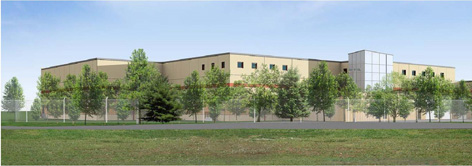| |
| Thesis Proposal |
| |
| Overview: |
| |
| Objective: |
The senior thesis final proposal is intended to explain the research and analysis proposed for the spring semester portion of senior thesis. The topics that were chosen have been identified based on cutting costs, energy consumption, accelerating the schedule, value engineering, constructability, jobsite efficiency, and critical industry issues. To view my proposal, click here.
Revised Proposal : Click Here - Updated 01/24/2011
Revised Proposal : Click Here - Updated 02/10/2011
|
| |
| Breadth Topics: |
Additionally, breadth topics were determined relating to the analysis in order to fulfill the requirements as an Architectural engineer. To view the Breadth topics, click here.
Revised Breadth Topics: Click Here - Updated 01/24/2011
Revised Breadth Topics: Click Here - Updated 02/10/2011
|
| |
| Analysis 1: |
Alternate Roofing Systems Analysis (Green, Solar):
The proposed solution to this problem will be to explore two different types of roof systems, a green roof and a PV panel roof. Additionally, research will be conducted for the energy benefits of each roofing system. A financial feasibility study will be performed to indicate whether the proposed roofing system is best for the owner. In addition, an energy analysis will be conducted to determine the benefits and drawbacks of each type of roofing system, these calculations will fulfill an electrical breadth which is explained in Appendix A of this report. |
| |
| Analysis 2: |
Risk Management – Long Lead Items:
This is a Risk Management analysis for all the long lead items of the Data Center. This analysis will explore the hypothetical idea of Turner being in control of the buying/fabricating of all the mechanical/electrical long lead items and to determine the benefits and risks using this management method. Cash flow diagrams are appropriate for this analysis to compare the cash flow of the construction manager vs. the subcontractor’s responsibilities of the long lead items. The schedule and costs of the Data Center will need to be adjusted for this analysis. |
| |
| Analysis 3: |
Façade redesign (Implement Tilt-up Construction):
This analysis explores a redesign of the parapet wall while conducting interviews with the architect about what he wants to accomplish with the current parapet walls. A structural analysis will need to be conducted to determine if any changes in beam/column sizes. The changes in the sizes of the beams and columns may decrease the cost of material for the Data Center. This will apply for a structural breadth. More information on this specific breadth can be viewed in Appendix A of this report. In addition to this redesign, incorporation of tilt-up construction will be assessed to essentially accelerate the Data Center’s schedule. |
| |
| Analysis 4: |
Critical Industry Analysis – Implement Latista (Commissioning):
The proposed solution for this problem is to research the Latista technology during the construction process. The main focus of this analysis is to look into Latista’s commissioning benefits. Latista is also a great tool for organization of materials onsite and procurement. This technology was discussed during the 2010 PACE roundtable. More information can be viewed in technical assignment two. |
| Breadth Topic 1: |
Structural Analysis (Analysis #3):
In an attempt to redesign the current architectural precast panels. This analysis will include redesigning the 20 foot parapet walls, with collaboration with the architect. Different size beams and columns may arise through the structural calculations that will be performed. |
| |
| Breadth Topic 2: |
Electrical Analysis (Analysis #1):
Looking into the integrating solar roofing, the PV panels will reduce the energy consumption of the Data Center. This breadth will explore the amount of energy that the PV panels will bring and determine how the energy is distributed into the building electrical systems. Furthermore, a buy back period will be determined. |
| |

